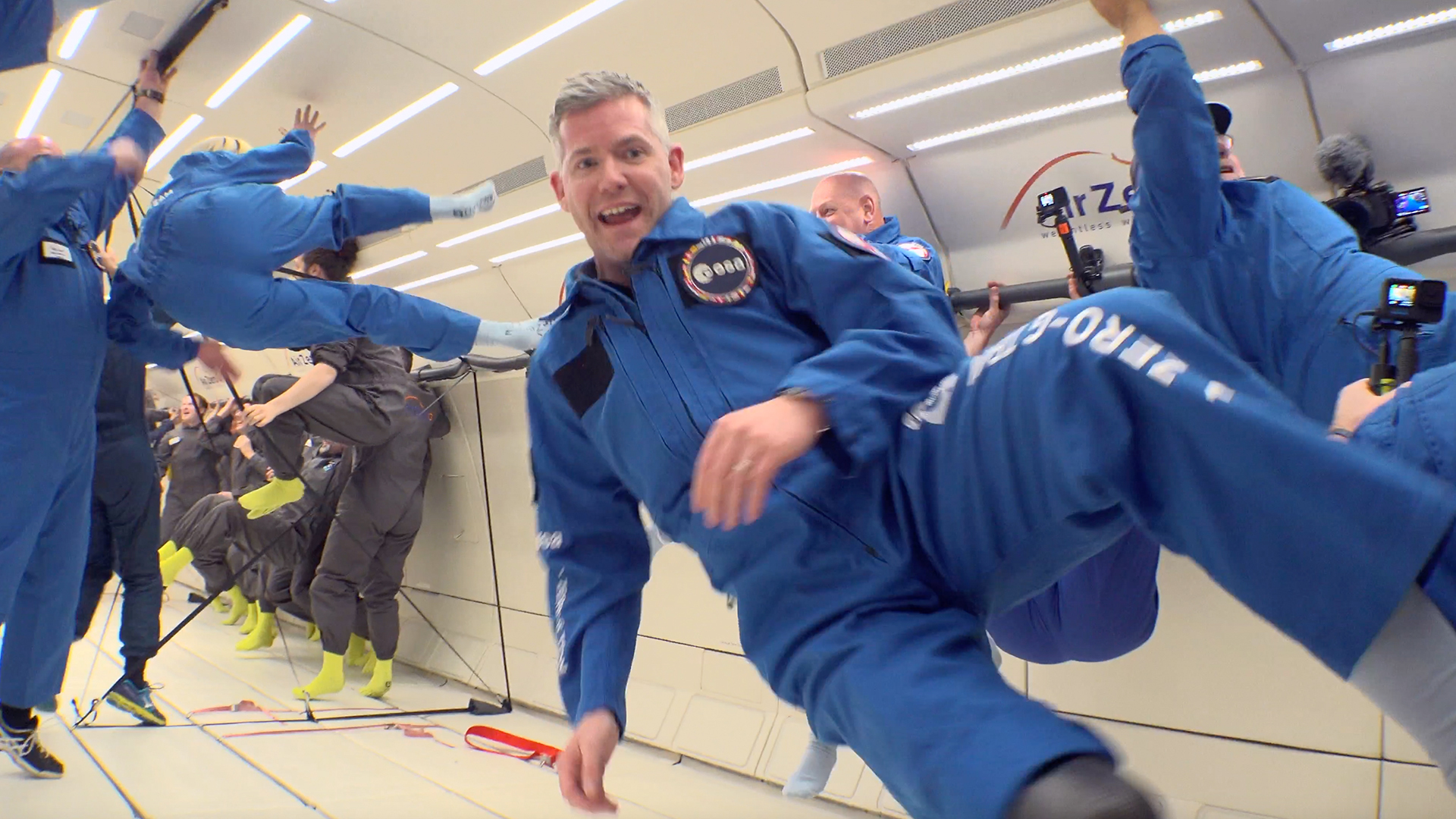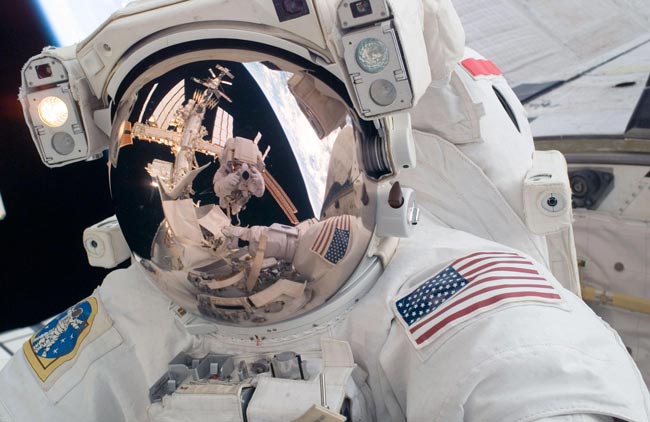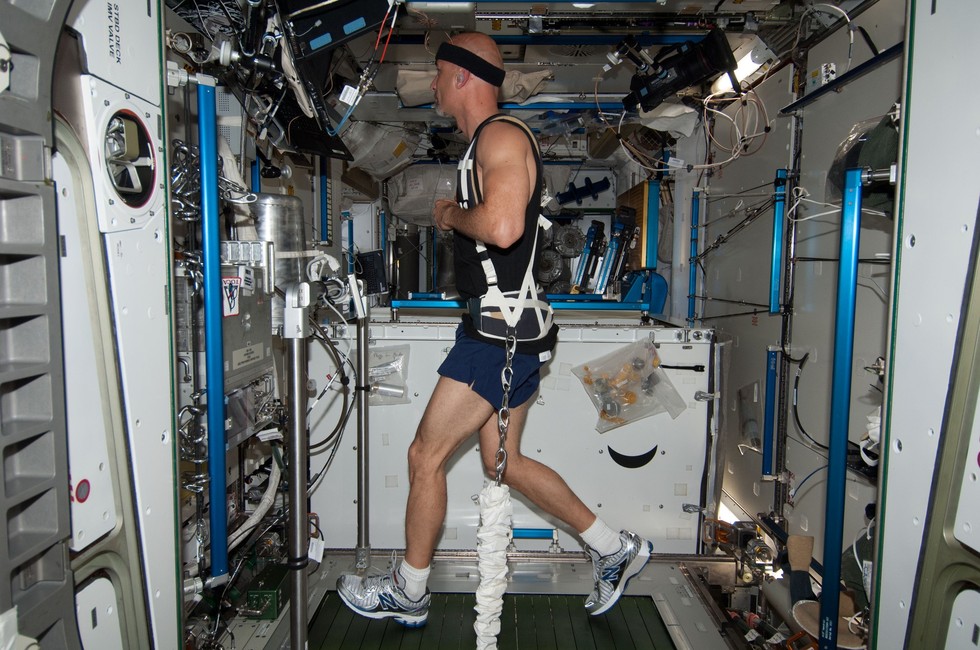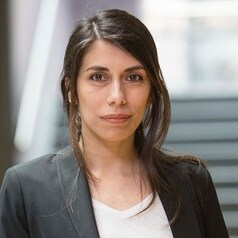
Recruiting the world’s first disabled astronaut doesn't mean space travel is inclusive – here’s how to change that
How can space agencies and “space tourism” companies make spaceflight more inclusive for disabled astronauts?

In the past, spaceflight was the preserve of government-funded astronauts who had to meet stringent physical, cognitive, psychological and social requirements for selection. But in recent years, that has all been changing.
In September 2024, two non-professional astronauts completed the first privately funded spacewalk, using the Crew Dragon spacecraft built by Elon Musk’s company SpaceX. Meanwhile, Houston-based private company Axiom Space is conducting regular flights to the International Space Station (ISS), carrying a mixture of government-funded astronauts and paying customers.
In the last few years, nearly 100 people have become private astronauts through the space tourism companies Blue Origin, operated by Jeff Bezos and Virgin Galactic, by Sir Richard Branson. While the price of a seat on these vehicles remains out of reach for most of us, prices are expected to drop as more players enter the market.
Despite the rapid growth in the number of space travellers, underrepresented population groups are still left behind, particularly those with disabilities. So how can space agencies and “space tourism” companies make spaceflight more inclusive for disabled astronauts?
The European Space Agency (Esa) recently recruited John McFall, who lost his right leg aged 19, as the world’s first disabled astronaut. McFall, who is a surgeon and former paralympic sprinter, will participate in a feasibility study to improve understanding of, and overcome, the barriers that spaceflight presents for astronauts with physical disabilities.
Esa’s most recent selection of astronauts was entirely of white European background, showing how far things still have to go. But its move to recruit McFall marked a significant milestone towards a more inclusive approach to spaceflight.
Get the Space.com Newsletter
Breaking space news, the latest updates on rocket launches, skywatching events and more!

Designing effective systems for the inclusion of disabled people is a longstanding challenge on Earth – and space presents a whole new paradigm. The very specific demands of spaceflight mean we can’t assume that traditional adjustments and assistive technology will work beyond Earth’s atmosphere. So, making spaceflight more inclusive requires looking at each step of going into space.
Astronaut training is a complex process, designed to simulate the space environment and enable candidates to perform well under a variety of conditions they may encounter in orbit. But in many cases, the training facilities are not well designed for individuals with physical or sensory impairments.
For example, in order to get on the plane that flies in an arc to simulate microgravity (colloquially referred to as the “vomit comet”), astronauts must climb a set of stairs, which presents a hurdle to anyone with a mobility impairment. Ironically, impairments that restrict the use of stairs on Earth might be much less of a restriction once in space.
Spacecraft and space suit design will be another key focus. The space suits onboard the ISS were originally designed with male astronauts in mind, meaning that female astronauts have to “make do” with what is there. This has caused challenges as the number of female astronauts has risen.

In 2019, NASA had to postpone the first all-female spacewalk because the torso of a space suit was too large for one of the spacewalkers. The Moon suit developed by Axiom Space in collaboration with Italian fashion house Prada is a step towards inclusivity, with anthropomorphic sizing to accommodate a wide range of crew members. Yet, future disabled astronauts might still encounter challenges if they have differences in their limbs or impairments to their dexterity.
Interestingly, the new SpaceX Extra Vehicular Activity (EVA) suits have something called “embedded modularity” – each section of the suit is customised to the intended astronaut, and all sections fit together. While intended to help with joint positioning, these suits present a unique opportunity to support disabled astronauts with limb differences.
Inclusive suits could include a single fixed leg portion for individuals with paralysis, and removable parts for those with limb differences. Haptic gloves could provide tactile feedback through the space suit for astronauts with limb differences.
For individuals with visual impairments, incorporating augmented reality (AR) heads-up displays (transparent displays that show the user data overlaid over their environment) and AI-powered image-to-voice software that can translate purely visual information into audio explanations could make a huge difference.
Technological support similar to the app “Be My Eyes”, pairing sighted assistants with visually impaired people to help explain their environment, could also find uses in spacesuits.

Thriving in space
An often overlooked part of astronaut life is maintaining physical fitness through intensive exercise regimes. Exercise is required because both muscle and bone waste away quickly in microgravity – but the fitness equipment aboard the ISS, such as the treadmill and bike, is difficult to adapt for disabled people. Both require use of both feet to operate.
Re-engineering the systems for exercise, eating, working, going to the toilet and other essential activities is critical for enabling disabled astronauts to thrive in space.
Assistive technologies that could be used inside a spacecraft, as opposed to within a spacesuit, are continually evolving and taking many forms. As such, there are always opportunities to improve the environment on a space mission to make it more inclusive for disabled astronauts.
Examples could include virtual reality (VR) for use in ground training, smart prosthetics that enable the completion of complex tasks, and computer vision with AI guiding visually impaired astronauts.
Policies implemented by space agencies have traditionally been exclusionary, focusing on able-bodied individuals and ignoring the potential of those who are different. And while some space agencies are establishing advisory committees and promoting diversity, this work is often limited to narrow purposes within these agencies.
Despite the UK and many other countries having specific laws to reduce discrimination in the workplace, the international nature of the space sector can cause difficulty. For this reason, policies mandating inclusion and equity across the space sector are crucial. Most importantly, space agencies should ensure adequate funding and resources to support any inclusion initiatives and work with disability advocacy groups.
Often, the root causes of inclusion barriers are a lack of understanding or awareness of disabilities. In many cases, consulting and involving disabled people in decision-making processes reduces these barriers. It is essential the space sector recruits individuals from diverse backgrounds to begin with.
Although the concept of “diversity quotas” has historically been divisive, the first place to start is to understand the diversity both of current and potential space travelers. Publicizing diversity statistics can help hold agencies accountable, and encourage initiatives aimed at greater inclusion.
There remains a lot to do, but with a collaborative approach, the new commercial space race could act as a shining example to the rest of the world in its approach to disability.
Join our Space Forums to keep talking space on the latest missions, night sky and more! And if you have a news tip, correction or comment, let us know at: community@space.com.

Ezgi (PhD, MBA, BA (Hons), FHEA) is a Lecturer in Digital Marketing within the Marketing Division within Brunel Business School.
Her primary research interest has focused on the contexts of robotic services, virtual experiences, and the social influence effects in those settings. Ezgi published in international academic journals, such as Annals of Tourism Research, Journal of Consumer Behaviour, and Behaviour & Information Technology. She is the recipient of prestigious funds such as the British Academy/Leverhulme and Marketing Trust and the Best Paper Award in the AMA Winter Conference.
She currently serves in the Editorial Review Board of Psychology & Marketing.
Mainly trained in consumer psychology using experimental methodology, Ezgi is interested in examining how various experiences (such as together-alone experiences, and virtual experiences) affect individual consumers. Her recent works look at the role of algorithmic and robotic services` impact on consumers and desired marketing outcomes.
Over the years, she has established several fruitful research partnerships with co-authors from other countries, including Sweden, Denmark, and Turkey. She frequently collaborates across disciplines, serves in external boards and currently serves as RDA in two PhD student committees and co-supervising an external PhD student.









